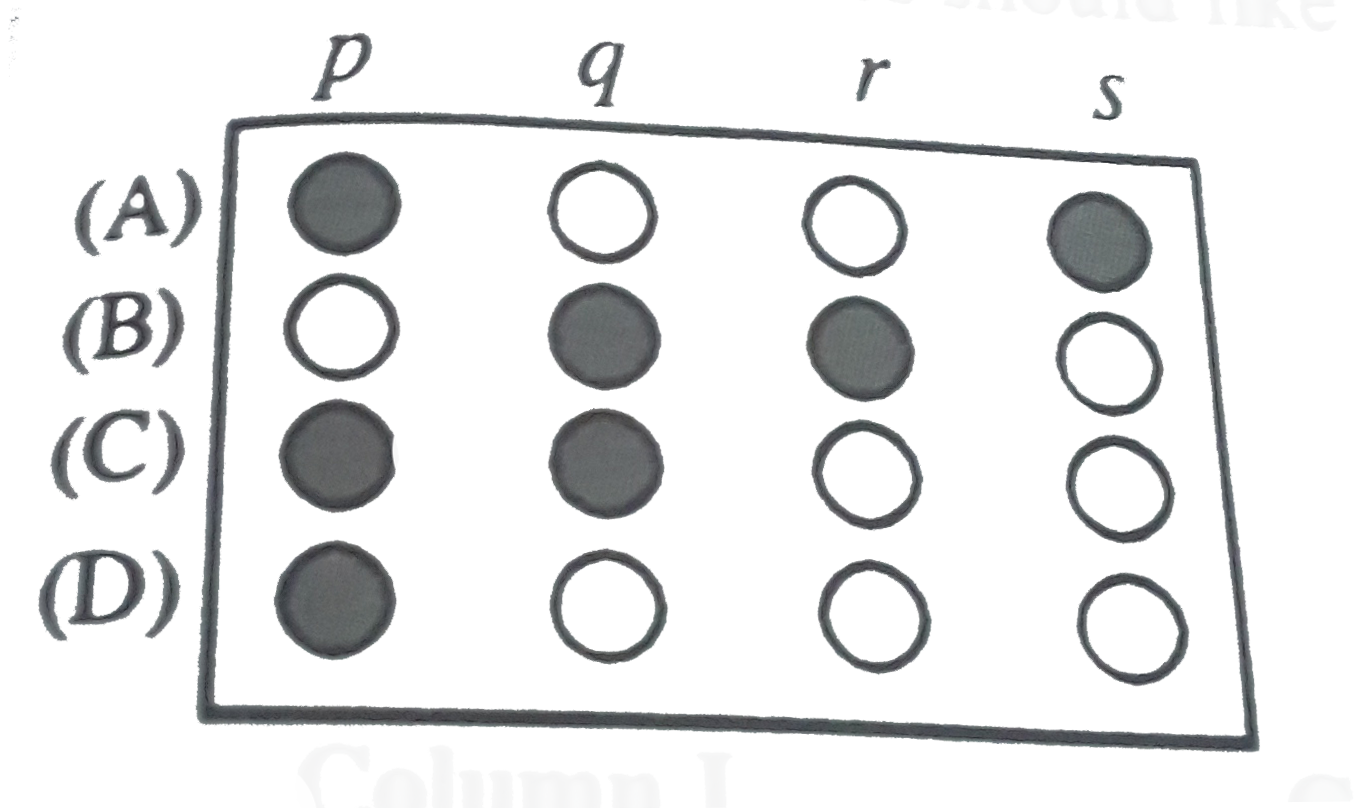Column IColumn II(A)ΘCH3(P) Nucleophile(B) BF3(Q) Base(C) .CH3(R) Electrophile(S) Acid
The correct Answer is:PQ
RS
R
Step by step video, text & image solution for {:("Column I",,"Column II"),("(A)" overset(Theta)(C)H_(3),,"(P) Nucleophile"),("(B) " BF_(3),,"(Q) Base"),("(C) " .CH_(3),,"(R) Electrophile"),(,,"(S) Acid "):} by Chemistry experts to help you in doubts & scoring excellent marks in Class 12 exams.
Updated on:21/07/2023Topper's Solved these Questions
- TEST PAPERSBOOK - BANSALCHAPTER - TEST PAPERSEXERCISE - CHEMISTRY PART (A)
14 Videos
- TEST PAPERSBOOK - BANSALCHAPTER - TEST PAPERSEXERCISE - CHEMISTRY PART (B)
1 Videos
- TEST PAPERSBOOK - BANSALCHAPTER - TEST PAPERSEXERCISE - Chemistry PART D
4 Videos
- SOLUTIONSBOOK - BANSALCHAPTER - SOLUTIONSEXERCISE - Exercise4
32 Videos
- THERMOCHEMISTRYBOOK - BANSALCHAPTER - THERMOCHEMISTRYEXERCISE - Exercise 4
15 Videos
Similar Questions
Here each question contains statements given in two column which have to be matched. Statements in columns I are labelled as A, B, C and D where as the statements in column II are labelled p, q, r and s. The answers to these questions are to be appropriately bubbled as illustrated in the following example.
If the correct matches should like the following.

Column IColumn II(A)H3PO3(p) more basic(B)H3PO3(q) reducing(C)H2SO3(r) dibasic(D)H3po4(S) reducing
View SolutionMatch the column -
Column IColumn II(A). RCNreduction−−−−→(P) 1∘ Amine(B). RCN(i)CH3MgBr−−−−−−−−→(ii)H2O(Q). Alcohol(C). RNChydrolysis−−−−−→(R). Ketone(D). RNH2HNO2−−−→(S). Acid
View Solution
Knowledge Check
Match the entries of column I with appropriate entries of coloumn II and choose the correct option out of the four options (a), (b), (c) and (d) given at the end of each question.
Column IColumn II(A)PCl5(p)Angular(B)IF7(q)Pyramidal(C)H3O+(r)Trigonal bipyramidal(D)ClO2(s)Pentagonal bipyramidalAA−r,B−s,C−q,D−pBA−r,B−q,C−p,D−sCA−p,B−s,C−q,D−rDA−s,B−p,C−r,D−q
Column-IColumn-II(A) BF−4(P) All atoms are p-block members(B) BeF2−4(Q) Central atoms is sp3hybridised(C) SiO2(R) Three dimensional netweor structure(S) molecule having 's' as well as p-block members
View SolutionColumn(I)Column(II)(a)CH3−⊕CH−CH3P.Pyramidal structure(b)ΘCH3Q.Planar geometry(c)CH3−.CH−CH3R.Electrophile(d)Singlest carbeneS.Nucleophile
View SolutionMatch the complex with its oxidation state of central metal
Column I Column II(A) Chromyl chloride test(p) S2−(B) Ring test(q) NO−3(C) Smell of vinegar(r) CH3COO−(D) Smell of rotten eggs(s) Cl−
View SolutionColumn IColumn II(A)B2H6(p)Borax(B)BF3(q)Lewis acid(C)AlCl3(r)pπ−pπ back bonding (D)H3BO3(s)NaBH4
View SolutionColumn I (Solvent)Column II (Nature)(A)Methyl alcohol(CH3OH)(p)Protophilic(B)Benzene(C6H6)(q)Protogenic(C)Ammonia(NH3)(r)Amphiprotic(D)Acetic acid(CH3COOH)(s)Aprotic
View SolutionMatch the column
Column I (Acid)Column II (pKaValue)(A) HCOOH(p) 1.73(B) CH3COOH(q) 3.74(C) PhCOOH(r) 4.17(D) (COOH)2(s) 4.75
View SolutionHere each question contains statements given in two column which have to be matched. Statements in columns I are labelled as A, B, C and D where as the statements in column II are labelled p, q, r and s. The answers to these questions are to be appropriately bubbled as illustrated in the following example.
If the correct matches should like the following.

Column IColumn II(A)NH3(p)Basic(B)PH3(q)sp3 hybridized(C)H2S(r)Acidic(D)H2O(s)Hydrogen bonded
View Solution
